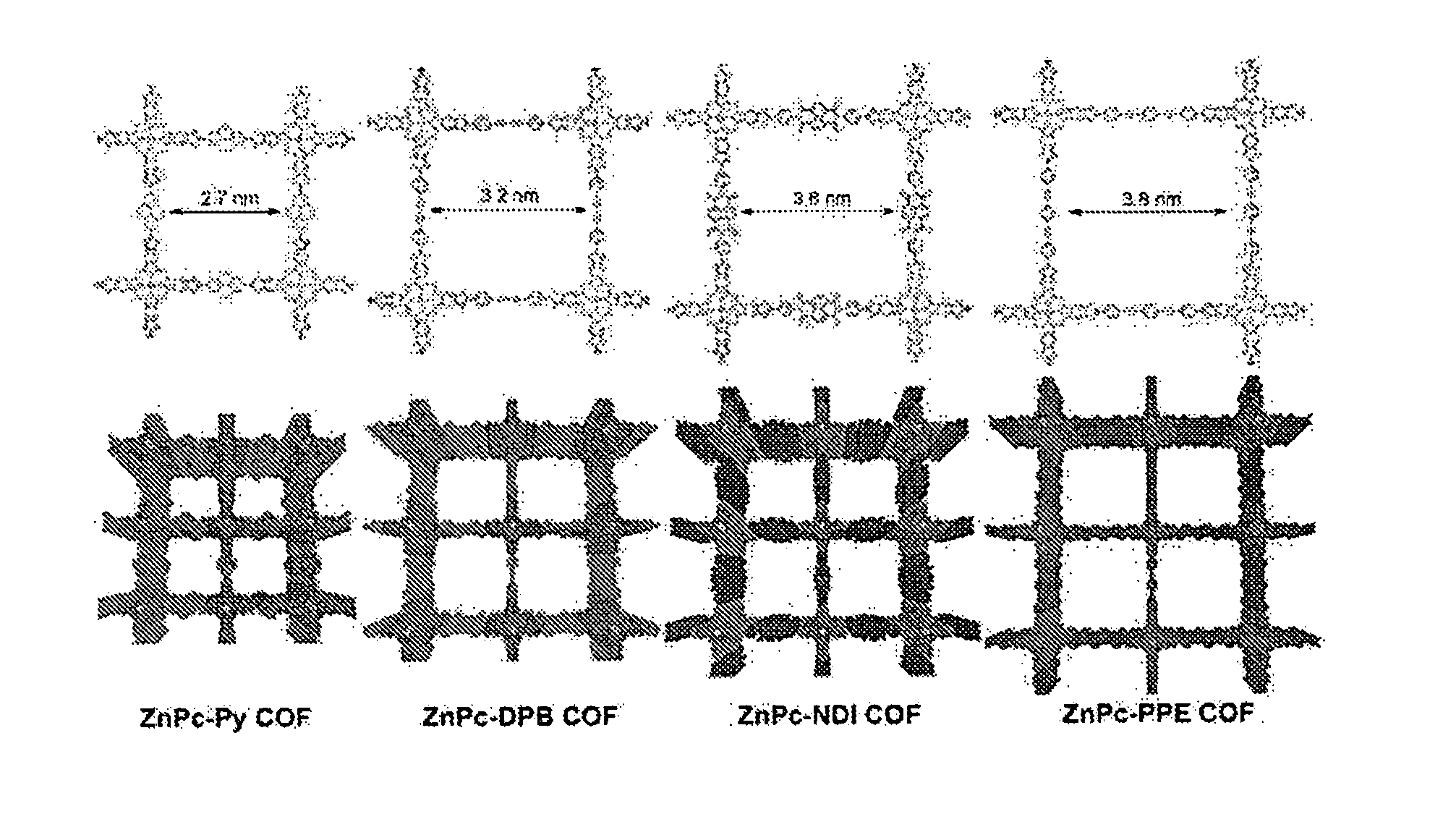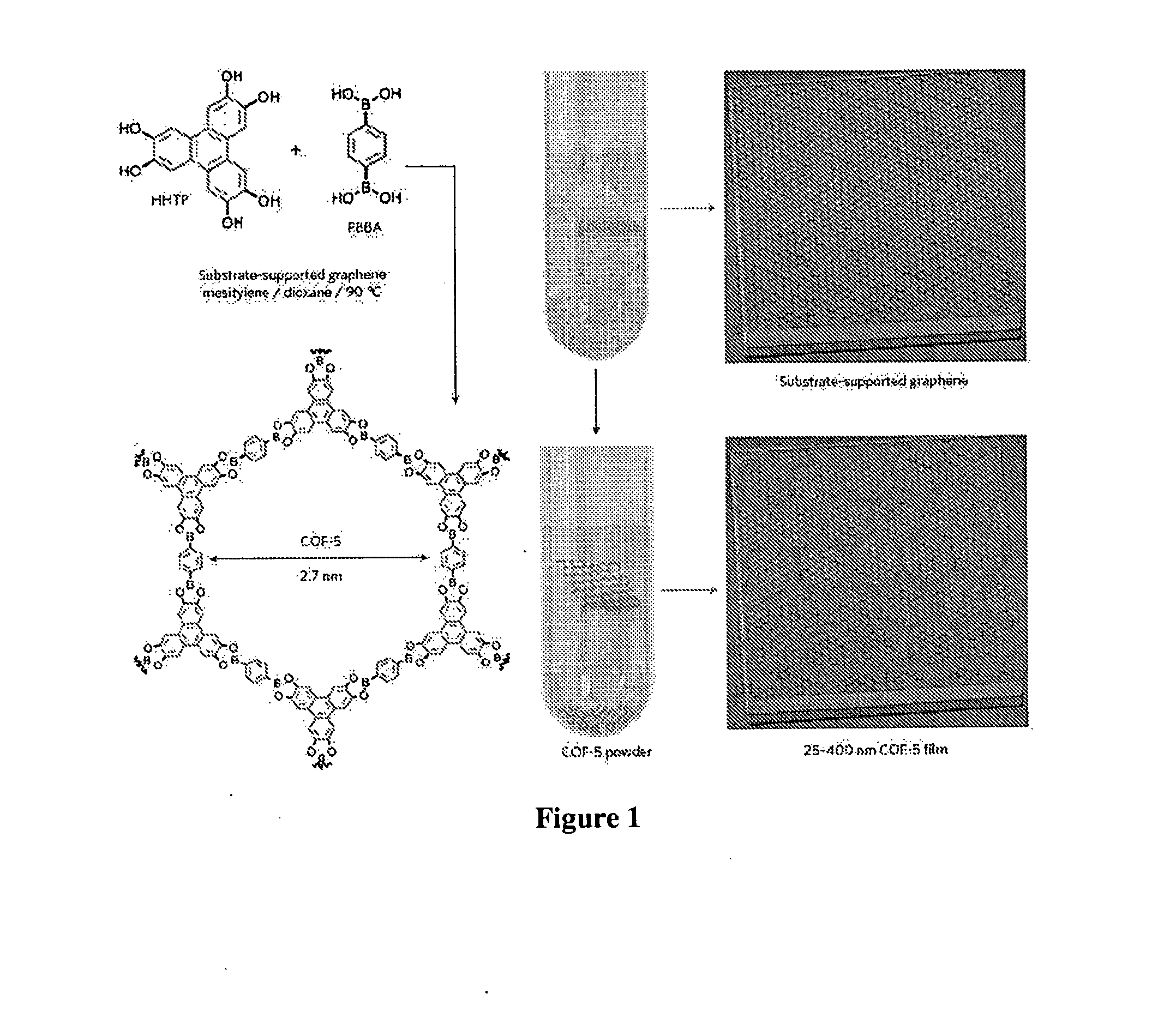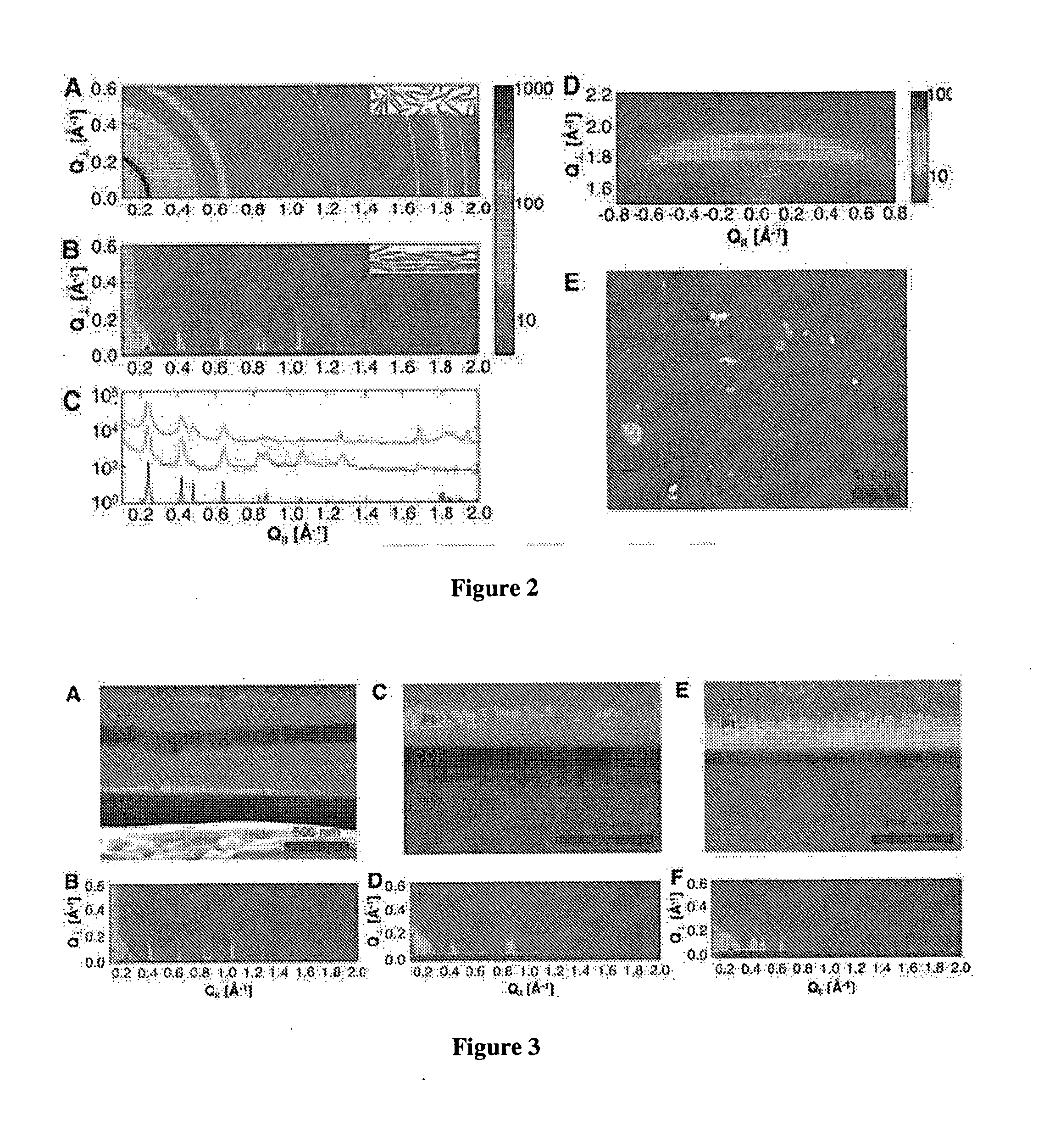Covalent organic framework films, and methods of making and uses of same
a technology of organic framework films and organic materials, applied in the direction of single-layer graphene, instruments, transportation and packaging, etc., can solve the problems of difficult or impossible to precisely measure the electronic properties of materials, unstructured random interphases between donors and acceptors, and lack of control over nanoscale morphology and orientation, etc., to achieve the effect of improving crystallinity
- Summary
- Abstract
- Description
- Claims
- Application Information
AI Technical Summary
Benefits of technology
Problems solved by technology
Method used
Image
Examples
example 1
[0085]The solvothermal condensation of 1,4-phenylenebis(boronic acid) (PBBA) and 2,3,6,7,10,11-hexahydroxytriphenylene (HHTP) in a mixture of mesitylene:dioxane (1:1 v / v) at 90° C. in the presence of SLG / Cu forms a framework known as COF-5 (FIG. 1), both as an insoluble powder and as a continuous film on the graphene surface. Powder x-ray diffraction (PXRD) and Fourier transform infrared spectroscopy (FTIR) of the unpurified powders indicated that crystalline COF-5 was obtained with only minor amounts of residual reactants in as little as 1 hour (FIG. 10), faster than the 72 hour reaction time used for its discovery.
[0086]The crystallinity of the COF-5 films and powders was compared using synchrotron X-ray diffraction. FIGS. 2A and 2B show 2-D X-ray diffraction patterns obtained from a powder sample and a film grown on SLG / Cu, respectively, using identical incident beam and scan parameters. The data in FIG. 2A were collected in transmission mode by suspending a ˜0.1 mm thick powder ...
example 2
[0093]A. Materials and Instrumentation. 1,4-phenylenebis(boronic acid) (PBBA) and 2,3,6,7,10,11-hexahydroxytriphenylene (HHTP), 1,4-dioxane, and mesitylene were purchased from commercial sources and used without further purification. Other solvents were purchased from commercial sources and purified using a custom-built activated alumina solvent purification system.
[0094]Fourier transform infrared spectroscopy (FTIR) was performed on a Thermo Nicolet iS10 spectrometer with a diamond ATR attachment. The spectra are uncorrected. UV / Vis / NIR absorbance spectroscopy of powder samples was performed on a Cary 5000 spectrophotometer using a praying mantis diffuse reflectance accessory. The background was recorded using potassium iodide ground in a mortar and pestle. Transmission mode spectra were recorded of COF films grown on SLG / SiO2 substrates (˜1.5 cm2). The background was recorded using a similar SLG / SiO2 substrate without the COF film.
[0095]Photoemission and excitation experiments wer...
example 3
[0110]The COFs were synthesized as powders by condensing Zn octahydroxyphthalocyanine with each of the four different linear diboronic acid linkers shown in FIG. 8. 2,7-Pyrenediboronic acid produces ZnPc-Py COF, a square lattice with 2.7 nm-wide pores. 4,4′-diphenylbutadiynediboronic acid provides the ZnPc-DPB COF with 3.2 nm pores. 4,4′-diphenylnaphthalenediimidediboronic acid forms the ZnPc-NDI COF with 3.6 nm pores, and this π-electron deficient linker demonstrates a means to incorporate both π-electron donors and acceptors into a single COF. Finally, phenyl-1,4-bis(phenylethynyl)diboronic acid yields ZnPc-PPE COF with the largest 3.8 nm-wide pores. The COF syntheses were performed in sealed glass ampoules in 2:1, 3:1, or 5:1 mixtures of dioxane:MeOH at 120° C. for 72 hours. The COFs were isolated as an insoluble microcrystalline powder whose FT-IR spectra confirmed the formation of boronate ester linkages resonant near 1340 cm−1 and showed attenuated hydroxyl stretches. The COFs...
PUM
| Property | Measurement | Unit |
|---|---|---|
| thickness | aaaaa | aaaaa |
| diameter | aaaaa | aaaaa |
| FWHM | aaaaa | aaaaa |
Abstract
Description
Claims
Application Information
 Login to View More
Login to View More - R&D
- Intellectual Property
- Life Sciences
- Materials
- Tech Scout
- Unparalleled Data Quality
- Higher Quality Content
- 60% Fewer Hallucinations
Browse by: Latest US Patents, China's latest patents, Technical Efficacy Thesaurus, Application Domain, Technology Topic, Popular Technical Reports.
© 2025 PatSnap. All rights reserved.Legal|Privacy policy|Modern Slavery Act Transparency Statement|Sitemap|About US| Contact US: help@patsnap.com



